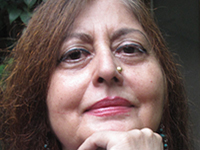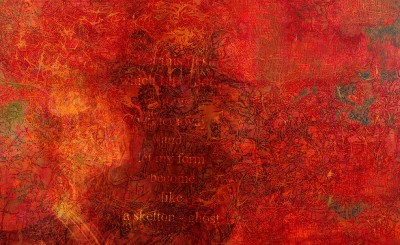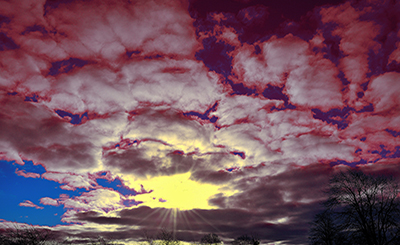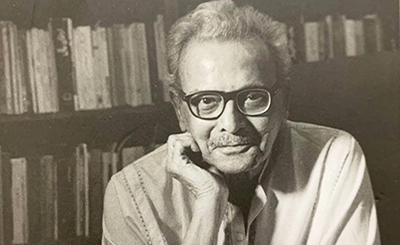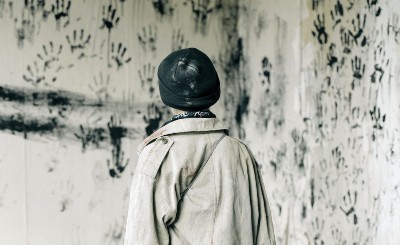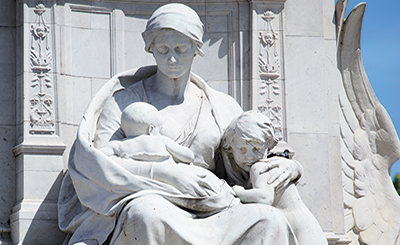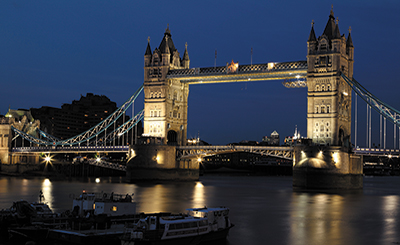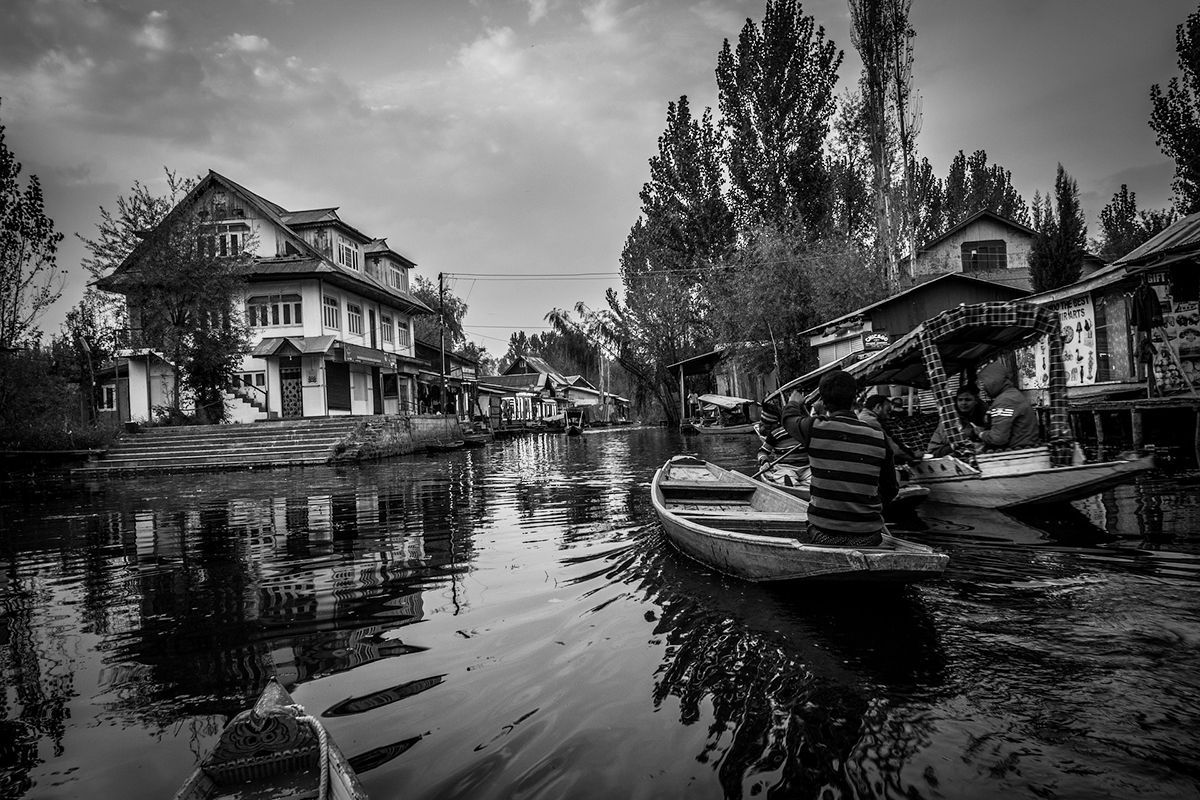
Scrapping Article 370 strips Jammu & Kashmir of its special status, but the story of tragedy and trauma in the world’s most militarised zone continues unabated
In the autumn of 2015, I’d met in Srinagar a thirty-year-old postgraduate, Imran Ahmad, who worked as an accounts officer in a private office. He told me he had spent his childhood in downtown Srinagar and that he still remembers details of the hartals and closures and the related violence. I quote him, ‘When I was in Class 6, the cops beat me while I was walking on the road, leaving me devastated. Things have been worsening all these years, peaking in 2010 when children were shot down on roads, in front of our eyes, by the security forces! What more agony can one go through?’
‘Why the stone pelting?’ I asked him.

‘It’s nothing but unleashing one’s anger,’ came his simple reply. ‘Anger at what? Isn’t the situation said to be improving with the PDP in power?’

‘Improving! What improving? Like all previous years, even this year, days prior to 15 August, children were arrested and detained... my own school-going cousin was picked up and locked up in the Zaina Kadal police station on the false accusation that he was involved in stone pelting. It took the cops a week to check the CCTV footage and release him. Imagine a young boy in a police lock-up for no fault of his. You can’t imagine the fear under which we live every single day. There’s been no change at all!’
He had narrated yet another painful experience, which shows the prevailing biases against Kashmiris. ‘Three of us — three Muslim Kashmiris — were invited by a Hindu friend to Mumbai. He insisted we stay at his place, and so from the airport we went straight to his house in Dongri. But we couldn’t stay there for more than a couple of hours. His parents told him to shift us to a nearby hotel as the neighbours were showing uneasiness at “bearded, Kashmiri-looking men in the building”. Our friend was apologetic and booked a room for us in a hotel. I’m not sure whether we would have been able to get a hotel reservation on our own because of our Kashmiri identity. In fact, a few years back, when I was working in New Delhi, I had to go to a police station in Mahipalpur to fill up some forms, answer all possible queries, go through rounds of humiliating questioning, only then could I get a room on rent... so much suspicion, distrust and humiliation! I left my job in Delhi as I wanted to be here with my people, to be part of their daily struggles. I’m proud to be a Kashmiri and, yes, I have grown a beard because I want to show my Muslim identity.’
These are not one of those rare or once-in-a-while incidents. As a young student summed it up, ‘Here in the Valley, all Kashmiris have been humiliated by the security forces, and one in eight has been severely tortured, if not killed.’
Each time I’m in the Valley, gory details of traumatic situations surface. While typing in this chapter, I’m reminded of the horrifying incident of November 2014, when two Kashmiri men were gunned down by the security forces on the outskirts of Srinagar city because they didn’t slow down their car. Several questions come to my mind. Will the security forces gun down car drivers in Mumbai or in New Delhi or in any other city of India if they don’t halt or brake when signalled to do so? How can these blatant killings by the Army be justified? Where was the outcry in the corridors of power at these killings?
Local media reports had even pointed out that slain militant Burhan Wani was deeply affected by the brazen killings of schoolboys in the summer of 2010. He was then just sixteen years old and couldn’t come to terms with the killings of Kashmiri youngsters. He was also affected by the harassment of his relatives by the security forces and by the death of his innocent brother in a police encounter. In fact, news reports stated that the J&K government has cleared an ex-gratia relief of Rs 4 lakh for the next kin of Khalid Muzafar Wani (brother of Burhan Wani), who was killed in a controversial firing incident by the security forces in April 2015.
The Going Gets Tough
This generation of Kashmiris has grown up in extremely tough and trying circumstances. They have spent their childhood in the midst of curfews and crackdowns. They have never really experienced carefree adolescent days as insecurities and apprehensions have stood in the way throughout. Disruptions and deaths have left a deep imprint on their young minds. The young are subjected to repeated frisks and checks by the security forces in the most humiliating of ways. It’s near impossible to lodge a complaint against any member of the forces for fear of the consequences and also because of the sheer futility of the entire exercise.
Today, employment avenues are shrinking for Kashmiris. Even big business houses do not care to move beyond Jammu. Why? Is it because of security phobia or because of communally charged politics?
The anger is widespread. So is the pain. There have been surveys conducted by Médecins Sans Frontières (MSF), an international, independent, medical humanitarian organisation, which came up with dismal pointers to the emotional disturbances felt by civilians, connected directly or indirectly to the everyday violence. I have seen Kashmiri children playing in the ever-increasing graveyards in and around the city. I’ve seen children aping the ‘interrogation tactics’ of the security forces — punching, kicking, and twisting each other’s limbs...
While the rest of the universities in the country boast of strong student unions, it is disappointing to note that student unions are banned in the Valley’s educational institutions. To quote a former vice-chancellor of the Islamic University of Science and Technology in Awantipora, Siddiq Wahid, ‘For almost the entire history of some of our educational institutions, the “authorities” have not allowed the formation of student unions, giving the young in our society no opportunity to learn how to protest, debate or even discuss matters such as politics and social issues which are normally discussed at this age. These deprivations were historically instituted because of the atmosphere of distrust of the Kashmiri, which has not been corrected by successive administrations — political or educational. Such deprivations have their own effect.’
Today, there are apprehensions of right-wing ‘agendas’ being implemented in the educational institutions of the Valley. The unrest witnessed in the summer of 2016 on the campus of the Srinagar-based National Institute of Technology (NIT) is another example. A large number of non-Kashmiri students had to leave NIT Srinagar, following clashes between local and outstation students over ‘nationalism’. What started off as a strong reaction to the local Kashmiri students’ ‘celebration’ of India’s loss against West Indies in the World T20 semi-finals, snowballed into a major issue.
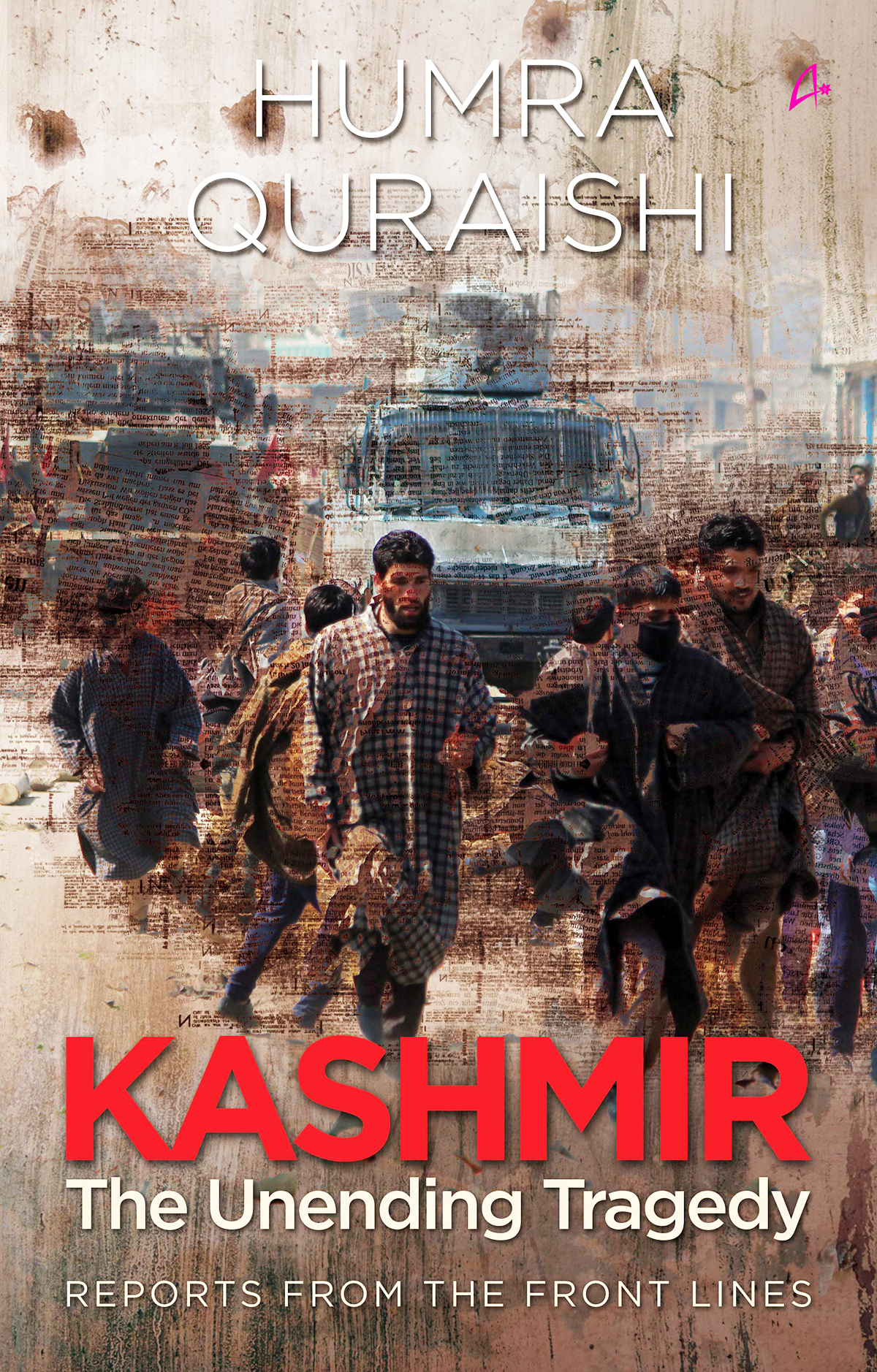
With the mess in the Valley getting worse by the day, Kashmir’s leading psychiatrist Dr Mushtaq Margoob has been categorical in saying that a large section of the people has been severely affected. Each time a crisis has erupted on the streets of Srinagar city, I have reached out to him to get his opinion, and his comments have remained unchanged all these years. To quote him, ‘A whole new generation of Kashmiris is growing up in this atmosphere of uncertainty, insecurity and stress. Undoubtedly, I am worried about them. This region has been witnessing traumatic situations for more than two decades now.’
Dr Margoob has also stressed that news of deaths and killings in fake encounters is bruising young psyches. ‘Today’s “trauma generation” has hardly seen a minute of peace or tranquillity in their lives. Under such trying circumstances, even an adult’s brain automatically shifts operations from highly evolved reality-based action processes to instinctual/emotion-based reactions of fight or flight course of action... defying law and order could also be a manifestation of the ever-increasing, indescribable levels of frustration and anger among the young Kashmiris.’
What Happens To Kashmiri Students Venturing Out of The Valley
Reports of Kashmiri students being attacked and humiliated across the country are on the rise. In fact, for the last several years, Kashmiris have been recounting the treatment meted out to them whenever they step out of the Valley. Communally slanted comments are made at them, some are even called ‘terrorists’.
They do not get rooms at hotels and hostels because people are wary of them. They have to first report to the nearest police station before approaching guesthouses for accommodation. Are Kashmiri students foreigners or have they come from an enemy country that they are made to report to police stations? Why are Kashmiris looked at with suspicion? Why are cops asked to keep a close watch on them?
This is not a sudden development. Way back in 2002, the People’s Union for Democratic Rights (PUDR) brought out a booklet with details of the ill-treatment meted out to Kashmiris outside the Valley. This trend has since worsened. In the summer of 2016, Kashmiri students were beaten up by political goons in Bhopal and Hyderabad. In another incident, Kashmiri students were targeted in a university campus of Haryana. More recently, it was painful to see the plight of four young Kashmiri students studying in Rajasthan’s Mewar University in Chittorgarh. They were made to stand as though they’d committed a heinous crime. All they had done was buy 300 grams of mutton from the local market. This was enough to trigger ‘beef’ rumours, leading to their arrest and public humiliation. They were later released from detention, but by then the damage was done.
While interviewing the late Mufti Mohammad Sayeed on two separate occasions (when he was the Union home minister and then the chief minister of J&K), I had asked him to comment on the treatment meted out to Kashmiris outside the Valley. He had given a detailed reply, ‘I’m aware of the kind of harassment and humiliation some Kashmiris are facing outside the state... I have openly talked at meetings about the dangers of looking at all Indian Muslims with suspicion... don’t link all Indian Muslims with the likes of Dawood Ibrahim. I have cited instance after instance of the loyalty of the Indian Muslim and yet I fear some polarization is indeed taking place.’
There are no platforms or forums through which harassed Kashmiris can even lodge a complaint. There are no helpline numbers. It is not just the lack of transparency and accountability but an abundance of communal slants that worsen the situation. There have been many such cases of harassment, but I shall focus on two incidents which had been highlighted in the media, though there was little follow-up in terms of action taken against the state machinery: On 23 January 2007, Delhi Police dropped charges (of being a terrorist) against Kashmiri model Tariq Dar, but not before detaining him for almost three months. In the same month, a Kashmiri student named Shafqat who was studying in Dehradun was beaten up by Army jawans because he’d entered their train compartment by mistake. He was thrashed so severely that the case was brought up in the Assembly session.
Another common occurrence now is the linking of the Valley’s youth to terrorism-related cases even before the facts are cross- checked and verified. Again, this is no sudden development. Several such cases have been reported all through these years, including the much-hyped incident of August 2005, when photo-shots of Kashmiri Muslims were linked to the Darul Uloom Deoband, a centre for Islamic studies located in Uttar Pradesh. It was only later that the Army clarified the men were not terrorists but actually members of VDCs (Village Defence Committees), who were themselves engaged in fighting militancy along with the security agencies. Those clarifications were later published in national dailies.
Although a large number of Kashmiri students study in universities and colleges across this country, they mostly keep to themselves and move about the campus in small groups. I have been noticing this trend for the last several years. In recent years, this situation has only worsened, with reports of right- wing brigades targeting and even openly abusing and thrashing Kashmiri students on any given excuse—the latest, of course, is the uproar on the beef issue.
Also, it’s a known fact that the police together with the political mafia keep a watch on Kashmiri students. During 2005 and 2007, when I was a visiting professor at Jamia Millia Islamia, New Delhi, and also during my visits to Aligarh Muslim University, I was told by several Kashmiri students that they do realise this reality — cops keep an eye on them and with that they feel singled out, as though marked as different. Even Kashmiri professionals working in and around New Delhi recount how the local police keep a watch on them, to see where they eat, live or travel.
Writings Laden With Pain
The Kashmir Valley has always been known for its rich literary heritage. In the bygone decades, the Valley was the only place in this subcontinent to have produced a large number of poets but now there’s a definite decline.
The young Kashmiris’ words are laden with pain. I have held creative writing workshops for students at the Islamic University of Science and Technology at Awantipora in 2010 and at Srinagar’s Central University in 2012, and during my interactions with students, I noticed that not many laughed in the carefree way of youth.
The pain and angst of living in a land blessed with incomparable beauty and unimaginable turmoil are reflected in the writings of the young Kashmiris. There are just a handful of forums and fewer platforms for them to read aloud or even discuss literary works. And we, sitting in different parts of the country, have made no effort to try and connect with the young students of the Valley.
To quote from the writings of two students — Anees Amin
Zargar and Mir Ubaid—whom I met during the creative writing workshop at the Islamic University of Science and Technology:
I’m a man lost in time
All I need is a time machine Time and tide wait for none
Need to come out of this hopelessness... Travel to the great beyond
Raise me dead from the graveyard Lose my sanity until she comes
All I need is a time machine... –Anees Amin Zargar
Student Asma Riyaz’s prose detailed an explosion, ‘... Suddenly everything turned into chaos. I turned deaf and blind for a couple of seconds. I don’t know, should I call it smoke or dust, but whatever it is, it’s paining my eyes and it is all over the place... It is an explosion... I’m sitting next to my sister and both of us are under a table, it seems that I am in shock because other people are crying and I am not... In the midst of this mess and tension while I am sitting under a table, I managed to see a woman... Her face was not clearly visible as it is masked with blood. I failed to identify her actual face but I witnessed her struggle with death, which unfortunately she lost...’
Cries For Aazadi
Lately, I have been faced with a set of connected queries: Are young Kashmiris joining the Islamic State (ISIS) or Al Qaeda? Are they getting Talibanised or radicalised?
During my long years of travels in the Kashmir Valley, I have not come across ardent supporters of ISIS or Al Qaeda. Here I must write about comments on these outfits, which go a long way to relay how well-aware and outspoken the young Kashmiris are about the current political strategies in the Western world. When I had rather too directly asked whether there could be possible chances of angry Kashmiris joining ISIS or Al Qaeda, a youngster quipped, ‘Why should we be lured towards those outfits? Don’t we know they are set up, funded and operated by the American and Israeli agencies so that Muslims kill each other! So that Muslims are ruined on all fronts! So that Muslims get labelled terrorists! Tell me how on earth could the ISIS organise such high-level terror attacks without American and Israeli backing and support? Here in our Kashmir, the men from intelligence agencies unleashed in our midst are throwing these ISIS or Al Qaeda traps or labels on us to distract everyone from the core issue.’
And much against the hyped reports that young Kashmiris want to go along with Pakistan, they state, ‘No, no, this is a useless propaganda spread around by government agents here to distract from our azaadi. We want no India and no Pakistan... we just want our independence!’
Kashmiris are angry with the Indian government’s latest move to bring along further distractions instead of announcing a Kashmir policy, with Prime Minister Narendra Modi harping on Balochistan and Gilgit and Pakistan Occupied Kashmir (PoK). ‘Next he will say, see what havoc is taking place in Syria, Iraq, Libya and Afghanistan!’ Each ruler tries to bring in distractions and create confusion amongst the masses, and with that the core issues are left out. They also say that today the sarkari experts have upgraded the word ‘Talibanised’ to ‘radicalised’. Have these so-called experts taken the trouble of travelling to the Valley to see for themselves the ground realities?
Controversial former governor of J&K Lt General (Retd.) S.K. Sinha, whose policies had worsened the crisis that had hit the Valley in the summer of 2008, was quoted as saying in an interview published in The Week magazine (August 2008): ‘Kashmir had been Talibanised ...’ In the same interview, Sinha had also stated that there was growing religious intolerance amongst Kashmiris. In my rejoinder to him (which was also published in the same magazine), I had pointed out that Sinha’s short-sightedness erupted from the fact that living in a state of paranoia in the Raj Bhavan, he had little opportunity to mix with the ordinary and apolitical Kashmiris, who anyway couldn’t have ventured anywhere near the governor’s residence for fear of being suspected to be terrorists and with that being shot dead by the security. I’d also put forth several facts and factors which went to prove that religious intolerance and fanaticism were not prevalent amongst the young or old Kashmiris.
Yes, it’s a fact that a majority of Kashmiris are turning to religion. But what’s amiss if they wish to go to a mosque five times a day for namaaz? What’s radical about it? It would be apt to say that a majority of Kashmiris are visiting mosques, but to prefix ‘radicalised’ could be stretching it towards the hyped notions heaped on us by the political rulers of the day.
In recent years, many modern-thinking Muslims of the Valley have turned to religion, with some even planning to write books on Islam. Many are turning into recluses overnight, in the belief that the solitude amidst plants and trees will help provide relief from the tense situation that pervades the Valley.
Turning to religion amid gloom is an expected consequence. Many of my Kashmiri friends told me that their faith has given them much-needed anchorage. To quote a medical practitioner in the Valley: ‘Our religious beliefs have given us the strength to sit with sabr (patience) when so much injustice and brutality is unleashed on us. I call myself just a Muslim — don’t add any prefix to it. I don’t follow any leaders of the day. My leader is the Prophet of Islam. How can we survive in this state of humiliation? Today it is only and only prayers that heal our wounds.’
There are many connecting factors here. There’s that growing urge to show one’s ‘Muslim identity’ in today’s surcharged atmosphere — when Muslim-bashing seems almost the order of the day, when there seems a political strategy to link outspoken youth to the Al Qaeda or to the ISIS, when the right-wing is directly or indirectly using ploys to label and attack minority communities.
Several years ago, while interviewing Mirwaiz Umar Farooq, I’d asked him to comment on the right-wing’s allegations that madrasas are grooming terrorists. The Mirwaiz had replied: ‘On the pretext of terrorism, these right-wing people are attacking madrasas... it is part of the Hindutva brigade’s agenda to spread all this disinformation.’
Young Kashmiris also point out that the right-wing rulers of the day seem hell-bent on giving a communal slant to the entire Afzal Guru case. I quote from the Indian Express dated 23 September 2007, ‘“The first thing we will do when voted to power is to hang Afzal,” BJP President Rajnath Singh announced here on Saturday. “We won’t waste any time”, thundered Singh, addressing a massive gathering at the Lal Parade ground.’
Young Kashmiris are also upset with the manner in which their local leaders are projected due to the vested interests of New Delhi. They point out one instance after another of certain sections of the electronic media portraying these leaders in a negative light. ‘When the tsunami hit the coastal states of India, the Yasin Malik-headed JKLF not just donated Rs 100,000 but even organised blood donation camps to raise 100 pints of blood. He (Yasin Malik) even offered to send volunteers to the tsunami- affected regions, but nobody bothered to report this. Even during the 2014 floods, Hurriyat leaders and volunteers were at the forefront of relief operations, yet the electronic media did not give due coverage. Certain channels even questioned their motives!’
Each time there are bombardments by Israel on the Gaza settlements, the Valley erupts with anti-America and anti-Israel sentiments. This anger has accelerated in the last few years, in the backdrop of America’s intrusion in Iraq, the execution of erstwhile Iraqi president Saddam Husain, and the divisions that the US has been bringing about amongst the Sunnis and Shias in the Middle East. What also stands out is the fact that Srinagar has a sizeable Shia Muslim population and they are absolutely against the US stand on Iran and Iraq. Srinagar’s Muslims had taken to the roads chanting anti-US slogans when the famed shrine in Iraq’s Samarra was bombed. The same had happened when the Danish newspaper Jyllands-Posten had published cartoons in 2005, triggering massive protests in European countries and even in our sub-continent. In the Valley, the demonstrations had continued for days as protestors said they would not tolerate any cartoon that insulted their religion or their Prophet.
In fact, in 2006, the anger was so widespread that the police had to seize and destroy copies of a national news magazine (India Today).The Tribune reported on 1 March 2006: ‘The police chief of the state said that the police had seized all copies of India Today which was carrying some objectionable pictures pertaining to Islam.’
With the political climate changing the world over, anger against the Israeli and Western powers has compounded. A major tragedy occurred in 2014 when the security forces killed an unarmed fourteen-year-old protestor in the Kashmir Valley. This boy was protesting against Israel’s brutal killings of hapless.
Palestinians in the Gaza settlement. There was a massive outcry, ‘At least this Kashmiri boy had the grit to protest against the ongoing genocide!’; ‘Instead of honouring his spirit, we killed him!’; ‘Don’t we civilians have the basic right to protest?’
The political rulers in Srinagar and in New Delhi did not comment on the boy’s killing and that aggravated the tension. Minister of External Affairs Sushma Swaraj categorically refused to comment on the issue and said she would not react on the current Israel-Palestinian crisis. But Kashmiris remained undeterred, ‘Is Israel so very overpowering?’; ‘Is Israel donating or selling arms to the Indian government to kill us?’; ‘Is the Indian government aping Israel’s war tactics to kill us with the same barbaric use of force that’s used to crush the Palestinians?’; ‘Are guns and other weapons got from Israel to be used as experiments on us Kashmiris?’; ‘Are arms lobbies flourishing because of the killings here?’
Prime Minister Modi’s visit to Israel in the summer of 2017 was again eyed with much apprehension in the Valley. To add to that, he did not visit neighbouring Palestine, nor did he mention the deteriorating living conditions of the hundreds and thousands of Palestinians surviving in the refugee camps. By bypassing the Palestinians, India’s foreign policy was clearly spelt out.
Today the young Kashmiris are vocal about New Delhi’s tilt towards Israel and the United States. They are also aware of the changing political scene; news reports of the poor condition of Muslims anywhere in the world affects them deeply. But there seems to be no visible or noticeable moves on the part of the government to contain the growing anger and despair. I’m reminded of what academic Siddiq Wahid had said: ‘Reaching out to young Kashmiris should be top priority. To begin with, Delhi and the state government will have to work hard to remove the political uncertainty that is the bedrock of all the unrest in Kashmir... The state’s education sector will need to take the initiative and be innovative both in and out of the classroom. It could, for example, institute forums through which students can socialise, discuss, debate and even protest on issues of various kinds, including politics. Outside schools, colleges and universities, the youth will need to be exposed to the revolutionary changes that have taken place in the world in the last twenty years, and there will have to be out-of-the-box initiatives amongst corporations in the private sector, government agencies and NGOs to address the rehabilitation of the majority of the youth who have not been able to leave the Valley in pursuit of higher education and jobs.’
In the spring of 2018, JKCCS released a report titled ‘Terrorized: Impact of Violence on the Children of Jammu and Kashmir’. This report is the assessment of fifteen years of violence (2003- 17) against children in J&K. It also focuses on the grim reality that there are no legal and normative processes or practices to protect children’s rights in J&K as minors can be and have been booked under the repressive Public Safety Act (PSA). To quote from this report:
Children in Jammu and Kashmir are living in the most militarised zone of the world, with the presence of 700,000 troopers, which exposes them to the risk of all grave six violations against children as laid out in [the] United Nations Convention on the Rights of the Child... The fifteen-year period from 2003 to 2017, witnessed not less than 318 killings of children (in the age group of 1 to 17) in various incidents of violence in Jammu and Kashmir. The killings of 318 children constitutes 6.95 percent of the civilian killings.
It is about time the political rulers halted their speeches and instead, reached out to the masses in humane ways. Step one should be to release all young teenage boys booked under the Public Safety Act. Efforts should be made to rehabilitate them through welfare schemes.
Excerpted from Kashmir, The Unending Tragedy: Reports from the Front Lines, Amaryllis, pp. 327, Rs 499
More from The Byword
Comments
*Comments will be moderated



